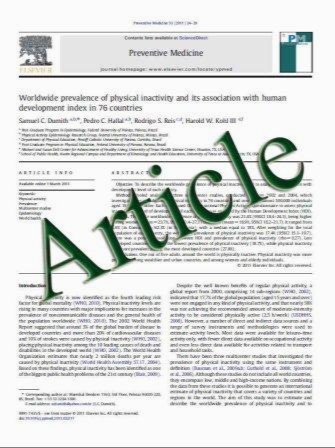A FRAX® model for the assessment of fracture probability in Belgium
- نوع فایل : کتاب
- زبان : انگلیسی
- مؤلف : H. Johansson & J. A. Kanis & E. V. McCloskey & A. Odén & J.-P. Devogelaer & J.-M. Kaufman & A. Neuprez & M. Hiligsmann & O. Bruyere & J.-Y. Reginst
- چاپ و سال / کشور: 2010
Description
Summary A country-specific FRAX® model was developed from the epidemiology of fracture and death in Belgium. Fracture probabilities were identified that corresponded to currently accepted reimbursement thresholds. Introduction The objective of this study was to evaluate a Belgian version of the WHO fracture risk assessment (FRAX®) tool to compute 10-year probabilities of osteoporotic fracture in men and women. A particular aim was to determine fracture probabilities that corresponded to the reimbursement policy for the management of osteoporosis in Belgium and the clinical scenarios that gave equivalent fracture probabilities. Methods Fracture probabilities were computed from published data on the fracture and death hazards in Belgium. Probabilities took account of age, sex, the presence of clinical risk factors and femoral neck bone mineral density (BMD). Fracture probabilities were determined that were equivalent to intervention (reimbursement) thresholds currently used in Belgium. Results Fracture probability increased with age, lower BMI, decreasing BMD T-score and all clinical risk factors used alone or combined. The 10-year probabilities of a major osteoporosis-related fracture that corresponded to current reimbursement guidelines ranged from approximately 7.5% at the age of 50 years to 26% at the age of 80 years where a prior fragility fracture was used as an intervention threshold. For women at the threshold of osteoporosis (femoral neck T-score=-2.5 SD), the respective probabilities ranged from 7.4% to 15%. Several combinations of risk-factor profiles were identified that gave similar or higher fracture probabilities than those currently accepted for reimbursement in Belgium. Conclusions The FRAX® tool has been used to identify possible thresholds for therapeutic intervention in Belgium, based on equivalence of risk with current guidelines. The FRAX® model supports a shift from the current DXAbased intervention strategy, towards a strategy based on fracture probability of a major osteoporotic fracture that in turn may improve identification of patients at increased fracture risk. The approach will need to be supported by health economic analyses.
Osteoporos Int (2011) 22:453–461 DOI 10.1007/s00198-010-1218-1 Received: 21 August 2009 / Accepted: 26 January 2010 / Published online: 30 March 2010


